How does the dishwasher work - the main components and how it works
Happy owners of dishwashers don't even think about how it works. But without this it is impossible to use it correctly. We will explain how the dishwasher works from the inside so that you do not have any problems with operation.
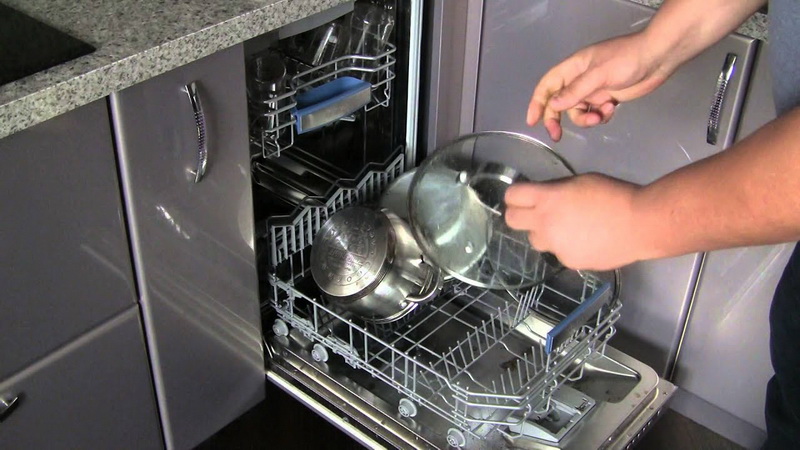
The content of the article
How the dishwasher works
To begin with, a dishwasher is a complex unit in which several processes take place simultaneously. For a superficial understanding, it is enough to know the composition of the apparatus in blocks.
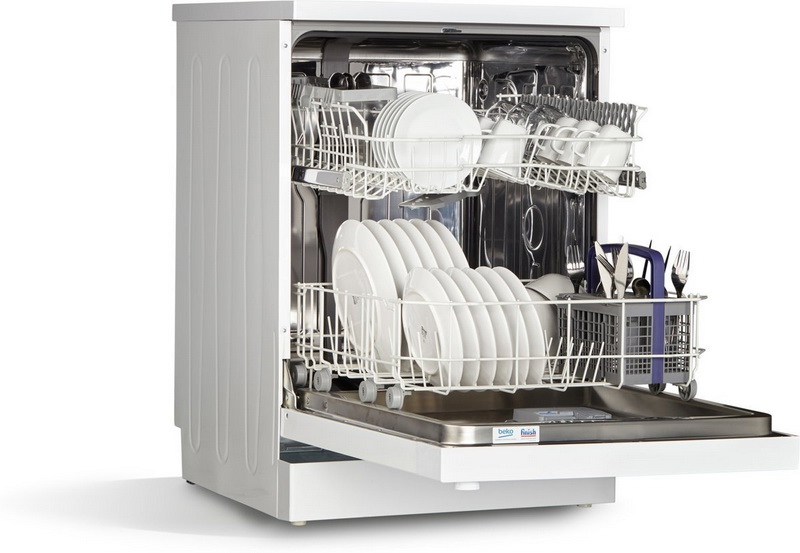
The main components of the household machine
For many, it seems magical how the dishes are generally washed. There are even suggestions that the plates rub against each other and so rub off. But the technology is completely different. Simplified, the inside of the machine consists of 3 main blocks:
- Headquarters (GU). This is a board with a software component. It is she who is responsible for the number of functions, their processing, and so on.
- Sensors. From them, the GU receives information about the amount of water, its temperature, and so on.
- Power mechanisms. This is the executive unit: sprayer, door lock, etc.
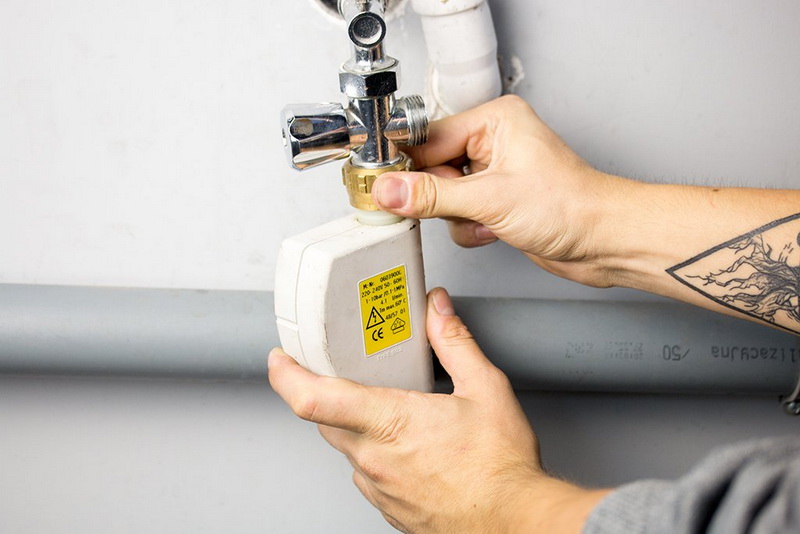
This is the basic structure of the dishwasher, and if you break it down into separate units, it will consist of:
- Dish baskets.
- Doors.
- Closers. They prevent popping when the doors are closed.
- Spray impellers.
- Coarse filter.
- Sewer hose.
- Pressure limiting valve.
- Pump for draining water into the sewer.
- Clean water tank.
- Leakage protection system.
- Circular pump.
- Condensation unit.
- Rinsing hopper.
- Blocker.
- Detergent reservoir.
- Water supply valve.
- Seal system.
- Salt reservoir.
- The heater is usually tubular.
- Water inlet hose.
- Guides for baskets.
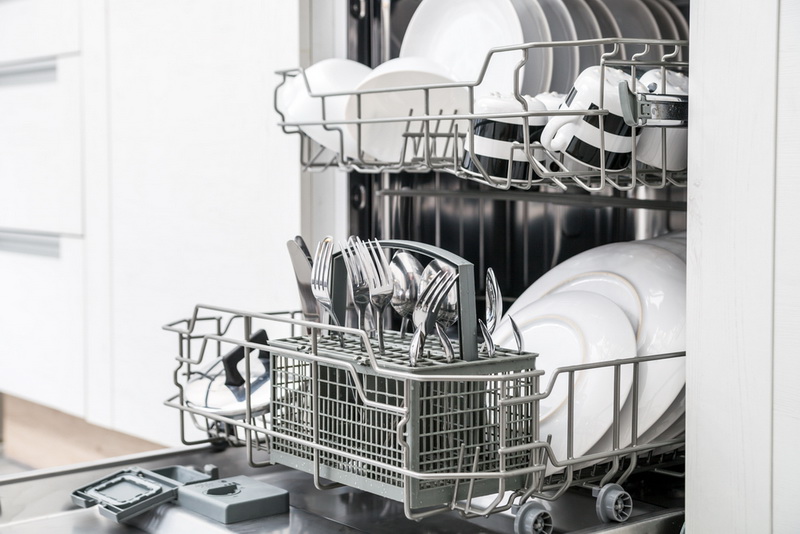
How the dishwasher works
Now we can look at how the dishwasher works. As soon as the program has been selected and the "Start" button is pressed, the complex dishwashing process begins. At this moment, each individual block begins to perform a predetermined function.
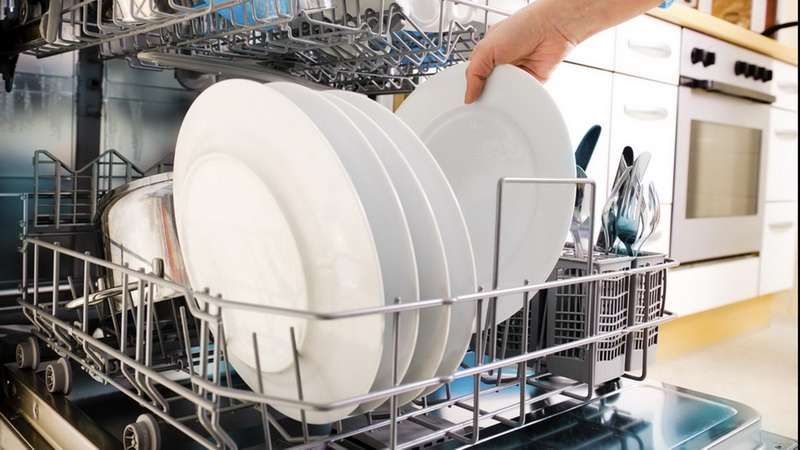
To work correctly, you need to add:
- Softening salt.Regular cooking will not work, even if it is "extra" grinded. There are a lot of impurities in it that will only clog the PMM. Therefore - only dishwasher salt.
- Detergent. For PMM, it is sold in the form of powders and tablets. It is much stronger than the usual "Fairy", moreover, it often contains abrasive.
- Rinse aid. Needed to remove residual detergent and prepare plates for drying.
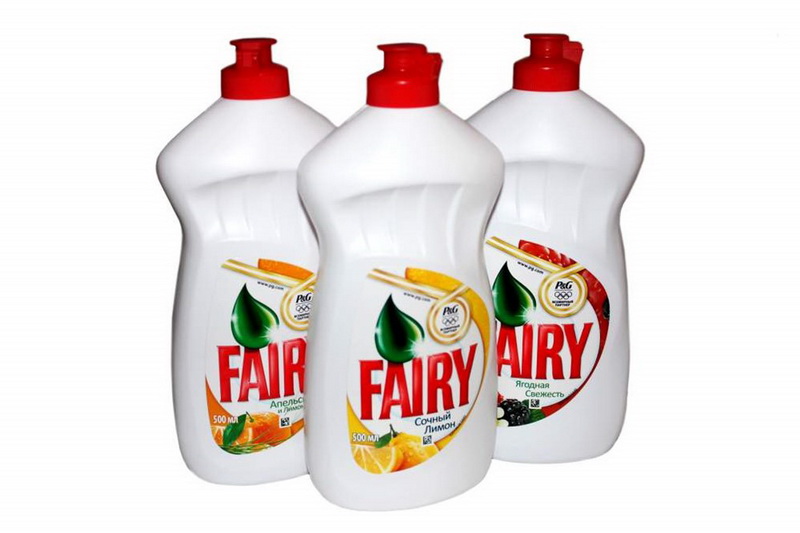
Water collection and preparation
The built-in dishwasher starts to draw off water first. This happens according to a pre-selected program. The first on the way to the water is the ion exchanger. It is necessary to absorb all small impurities that can scratch dishes or clog the machine. It is now mixed with a detergent tablet.
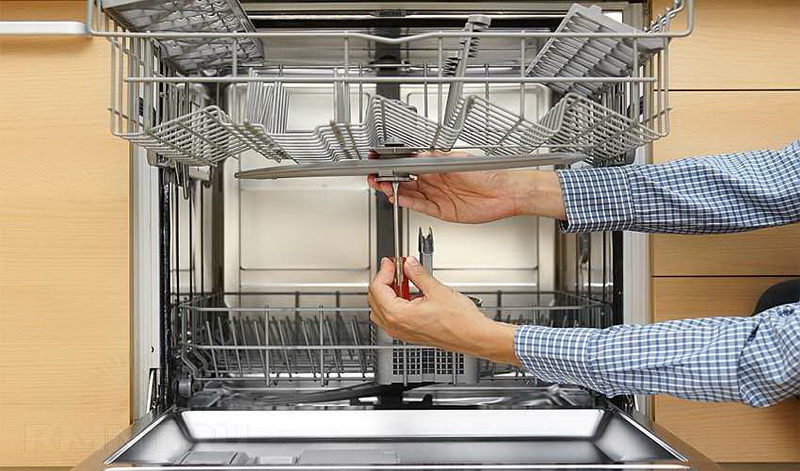
Then the flow reaches the heater. The most common is pipe electric. It is cheap and quite effective, although heating does not occur instantly. The washer usually does not have a hot water connection.
Only premium models are connected to a hot water riser. In this case, the heating element is not required.
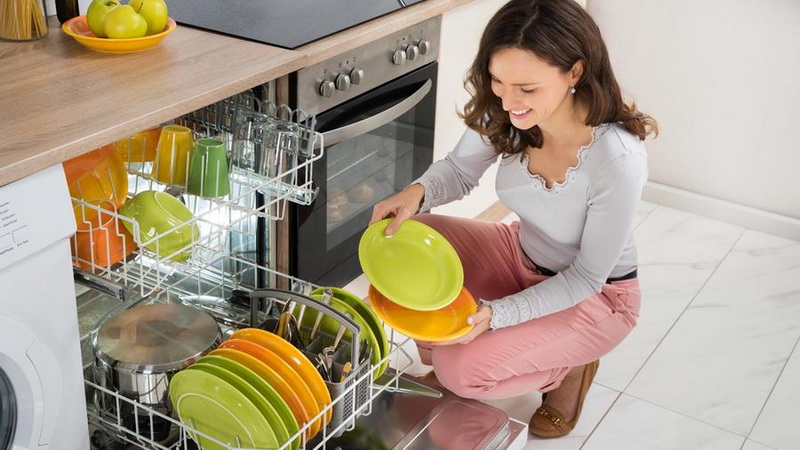
Spraying the working solution under pressure
Washes the dishwasher using high pressure and a mixture of detergent and water. For this, a special impeller is provided on top.
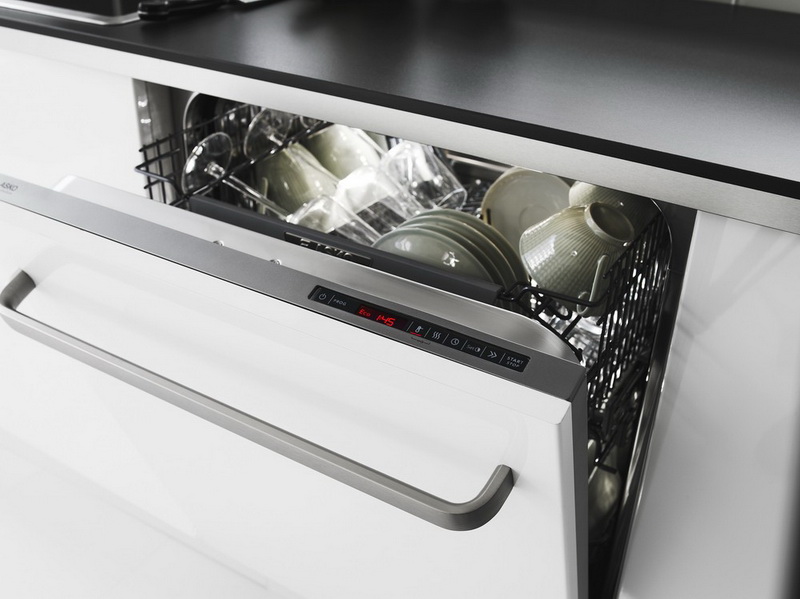
Under strong pressure, the water hits the dishes and knocks off pieces of adhering food and rinsing them into the waste container. In almost all models, the spray is on top. This is necessary in order to achieve coverage of all the dishes at once. The premium models also include side spray.
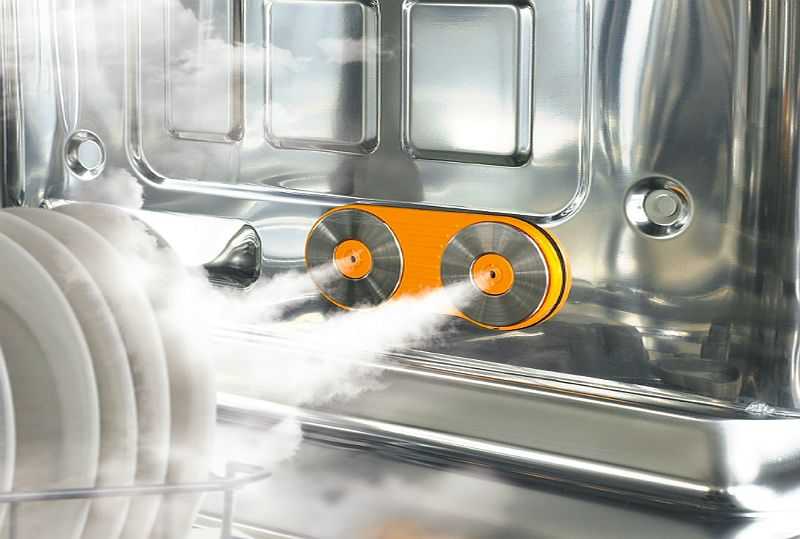
By the way, for this reason, there are rules for the arrangement of dishes in the PMM. If you put it in the wrong way, the wash will be bad.
Rinsing
The built-in and freestanding dishwasher must rinse the dishes at the end. It is not recommended to turn it off, as some pieces of food and detergent will remain on the dishes. In some cases, 2 rinses are required to wash off particularly corrosive chemicals.
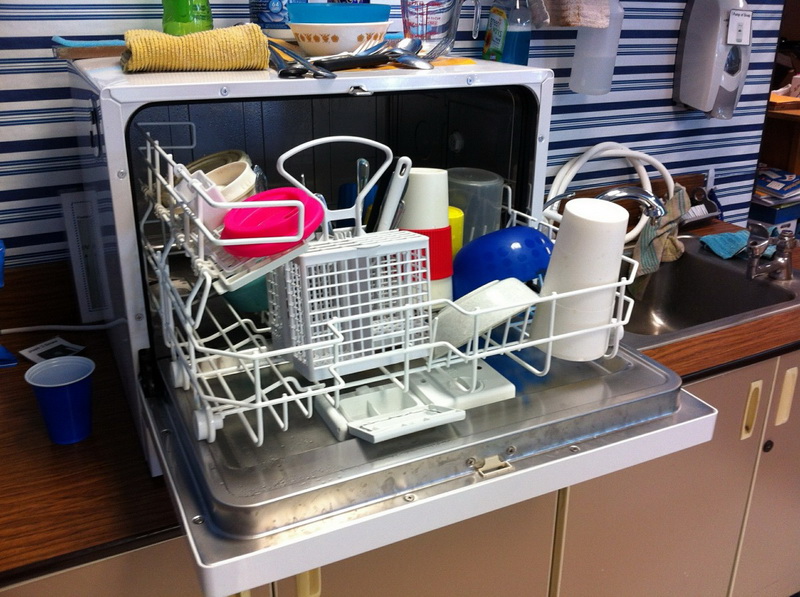
The best dishwashers allow the flexibility to adjust rinsing more efficiently. For example, reduce or increase the duration of the procedure.
Drying
Even the narrow and compact dishwasher has built-in drying technology. It is also considered a must, as bacteria accumulate on a damp plate, which then enter the food.

The drying process takes place in 2 ways:
- Forced. A fan, with or without heating, blows on the dishes, which speeds up the drying process.
- Natural. Natural evaporation of moisture also occurs in the chamber, but it is much more convenient to do this in the PMM. The reason is that moisture evaporation takes place in an enclosed space and the water is discharged into the drain.

How long does it take to wash the dishes
Depending on the type of PMM, the time to complete one cycle of the program varies. But, on average, it is in the range from 25 minutes to 3 hours.
It depends on the selected washing program. For example, if we choose any scheme with rinsing and soaking, the time increases by 20 minutes. Likewise, if we set the temperature to over 70 degrees.
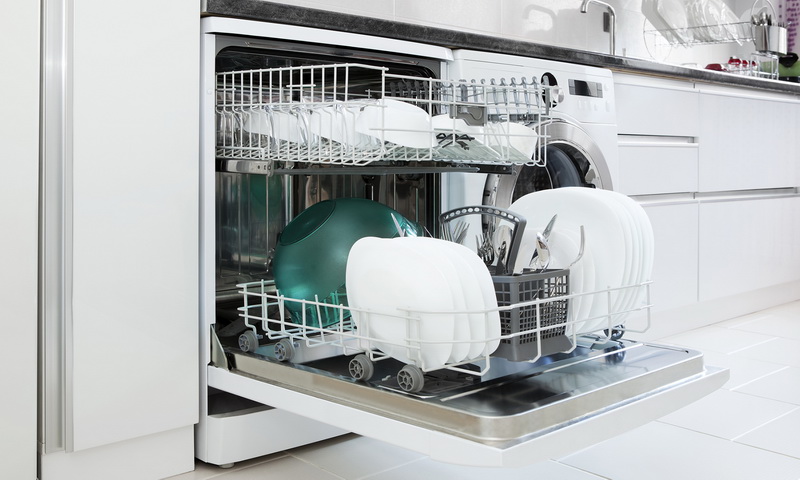
Almost all PMMs have the following modes and average execution time:
It depends on the selected washing program. For example, if we choose any scheme with rinsing and soaking, the time increases by 20 minutes. Likewise, if we set the temperature to over 70 degrees.
- Intensive A very aggressive sink designed for stubborn dirt. Therefore, a high temperature of 70 degrees is used. Average time is 60 minutes. As a rule, small dishwashers are not equipped with one.
- Normal. Average duration is 1 hour 40 minutes. Drying with rinsing goes into mode.
- Quick. Half-hour non-aggressive car wash. Suitable to wash off the simplest dirt.
- Economy. 2-hour wash in simple mode. Saves both energy and detergent.
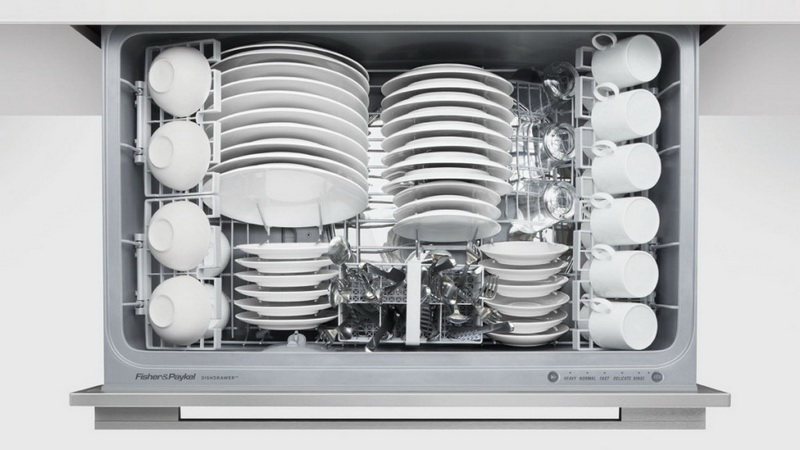
You can learn more about the work of PMM from the video:









